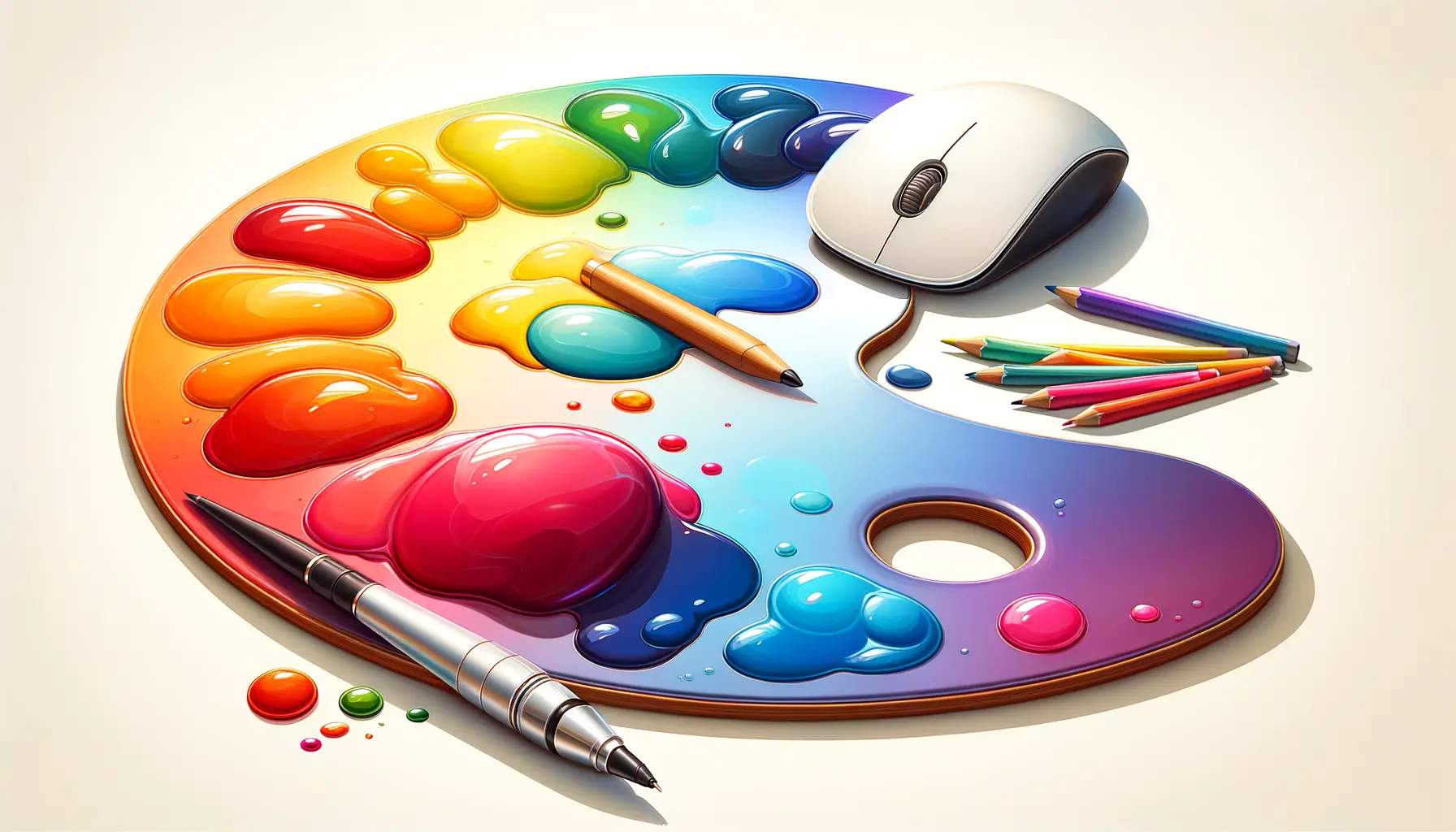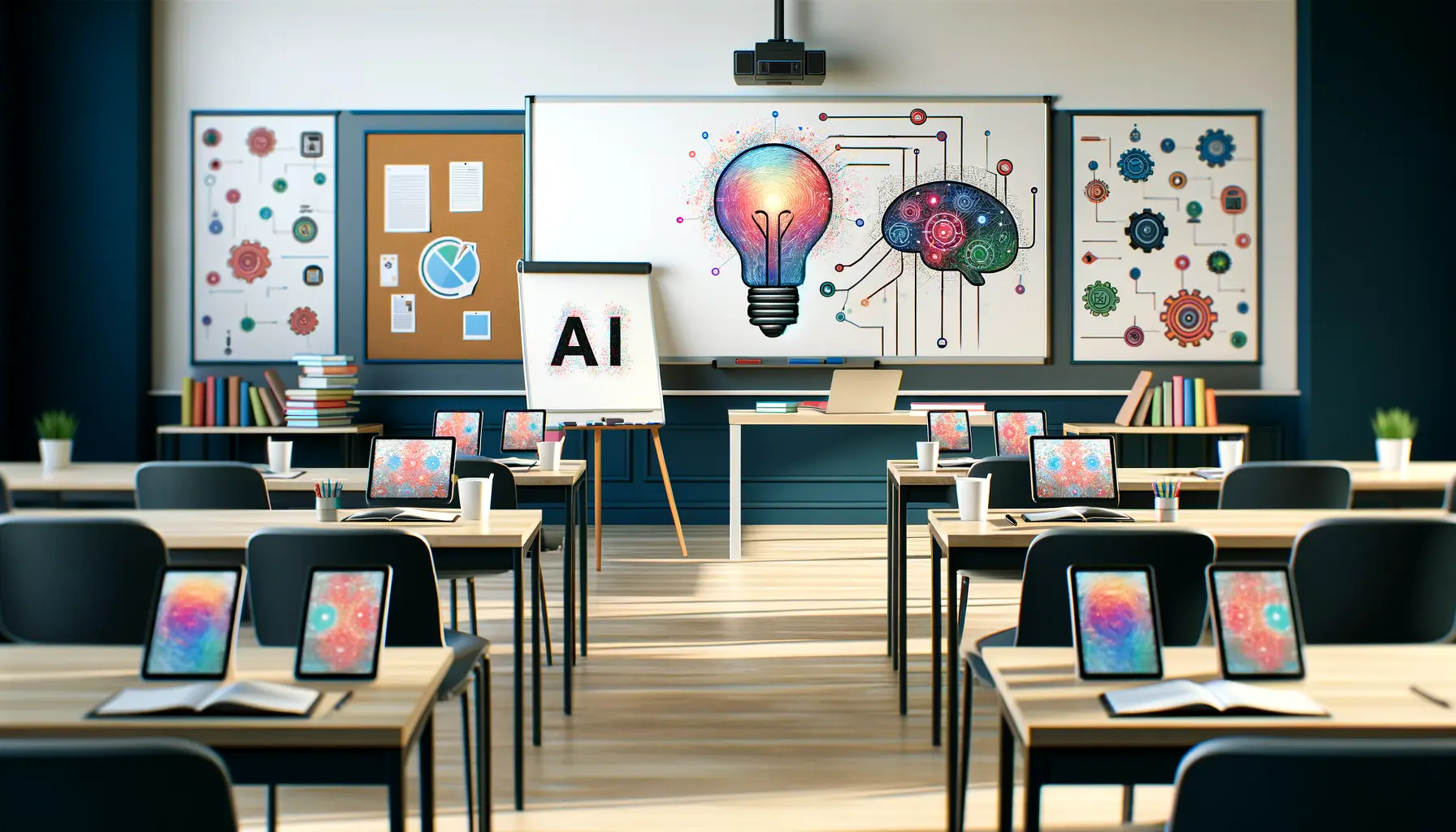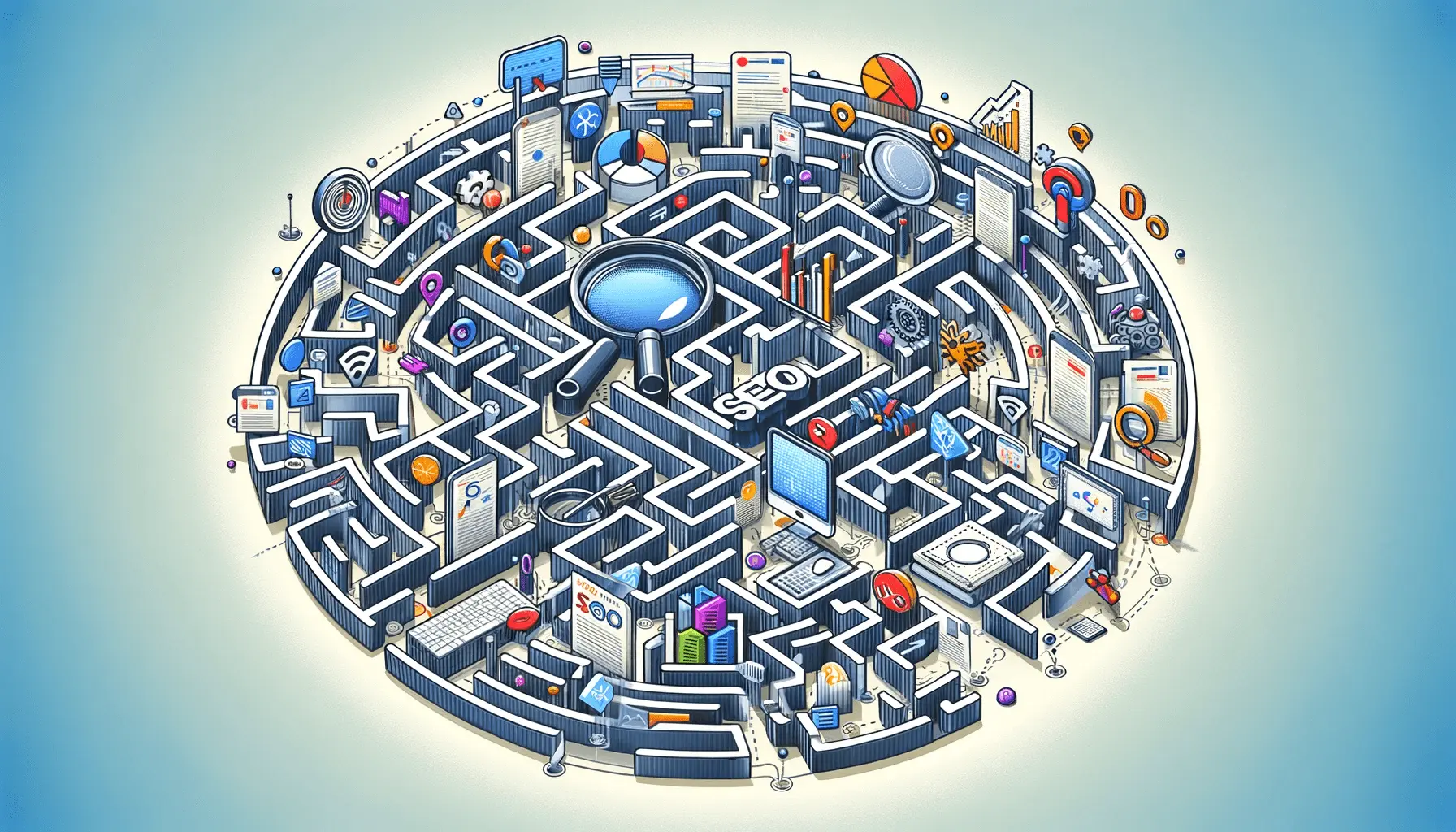Entering the realm of artificial intelligence and image generation, DALL-E stands out as a revolutionary tool, transforming textual descriptions into vivid, detailed images.
This capability not only opens new avenues for creativity but also sets a new standard for how we interact with AI technologies.
The essence of achieving the best outcomes with DALL-E lies in the preparation of inputs.
Crafting the perfect prompt is an art form that requires understanding, skill, and a bit of creativity.
This article delves into the nuances of preparing inputs for DALL-E, ensuring that users can harness the full potential of this powerful tool.
The journey to mastering DALL-E inputs begins with recognizing the importance of clarity, specificity, and imagination in prompts.
These elements are crucial in guiding the AI to generate images that not only meet but exceed expectations.
As we explore the intricacies of DALL-E’s capabilities, it becomes evident that the quality of output is directly influenced by the quality of input.
Thus, preparing effective inputs is not just about achieving desired results; it’s about pushing the boundaries of what’s possible with AI-driven image generation.
- Understanding DALL-E’s Capabilities
- Mastering the Art of Prompt Crafting
- Inputs: Semantic Variations in Prompts
- Enhancing Creativity with Abstract Prompts
- Optimizing Image Resolution and Aspect Ratios
- Integrating DALL-E into Creative Workflows
- Navigating Challenges and Ethical Considerations
- Embracing the Future of Creativity with DALL-E
- DALL-E Image Generation FAQs
Understanding DALL-E’s Capabilities
What Makes DALL-E Unique
DALL-E, developed by OpenAI, is not just another image generator; it’s a sophisticated AI model capable of understanding and interpreting complex prompts to create images that were previously unimaginable.
This uniqueness stems from its ability to process natural language inputs and translate them into visual representations with astonishing accuracy and creativity.
Understanding this capability is the first step towards mastering the art of prompt crafting for DALL-E.
The model’s architecture, built upon GPT-3, enables it to comprehend a wide range of descriptions, from simple objects to intricate scenes, and render them into images.
This level of understanding allows users to experiment with various prompt styles, from straightforward descriptions to more abstract and creative expressions.
The key is to align your expectations with DALL-E’s interpretative abilities, ensuring that your prompts are both imaginative and within the scope of what the AI can realistically generate.
Optimizing Prompts for Best Results
To optimize prompts for DALL-E, it’s essential to strike a balance between specificity and creativity.
Too vague a prompt might lead to generic results, while overly detailed descriptions can constrain the AI’s creative potential.
The sweet spot lies in providing enough context to guide the image generation process while leaving room for DALL-E’s creativity to shine.
This approach not only enhances the quality of the generated images but also makes the process more engaging and surprising for the user.
Another aspect of optimizing prompts is understanding the influence of keywords and phrases on the output.
Certain words can trigger specific styles or themes in the generated images.
Experimenting with different phrasings and observing their impact on the results can provide valuable insights into how DALL-E interprets language.
This experimentation is crucial for users who wish to achieve particular aesthetic qualities or thematic elements in their images.
The key to unlocking DALL-E’s full potential lies in crafting prompts that are clear, imaginative, and well-balanced, allowing the AI to understand the desired outcome while providing it with enough creative freedom to produce unique and captivating images.
Mastering the Art of Prompt Crafting
Creating the perfect prompt for DALL-E involves more than just a clear description of the desired image.
It’s about understanding the nuances of language that the AI responds to and leveraging this knowledge to guide the creative process.
This section explores strategies for crafting prompts that resonate with DALL-E’s capabilities, ensuring that each input is a stepping stone towards stunning visual creations.
To master prompt crafting, consider the following strategies:
- Be Specific Yet Flexible: Detail is crucial, but so is leaving space for DALL-E’s creativity. Specify colors, styles, or emotions, but avoid overloading the prompt with constraints.
- Use Vivid Imagery: Incorporate sensory details and dynamic descriptions to breathe life into your prompts. This encourages DALL-E to generate more detailed and lively images.
- Experiment with Different Structures: Try various prompt formats, such as questions, statements, or even poetic descriptions, to see how they influence the generated images.
Incorporating Context and Background
Context and background information can significantly impact the outcome of your DALL-E creations.
By providing a setting or backstory, you give the AI additional layers to explore and incorporate into the final image.
This could range from historical periods and geographical locations to imaginary worlds and abstract concepts.
For example, specifying “a futuristic cityscape at dusk” versus “a cityscape” prompts DALL-E to consider elements like advanced technology, atmospheric lighting, and perhaps even a color scheme that reflects the transition between day and night.
Leveraging Styles and Themes
One of DALL-E’s strengths is its ability to adapt to various artistic styles and themes.
Whether you’re interested in surrealism, impressionism, or photorealism, incorporating these terms into your prompts can guide the AI towards your desired aesthetic.
Similarly, thematic elements like “steampunk,” “cyberpunk,” or “fantasy” can direct the creative process towards specific genres, enriching the visual narrative of the generated images.
For instance, a prompt like “a steampunk airship floating above a Victorian city” instructs DALL-E to merge technological and historical elements, creating a cohesive image that aligns with the steampunk genre.
Exploring various linguistic structures and incorporating rich descriptive elements into your prompts can significantly enhance the quality and relevance of DALL-E’s outputs. This exploration not only improves your immediate results but also deepens your understanding of how to communicate effectively with AI for creative purposes.
Inputs: Semantic Variations in Prompts
The language used in prompts plays a pivotal role in the images generated by DALL-E.
Semantic variations, or the use of different words and phrases to convey similar meanings, can lead to diverse and sometimes unexpected outcomes.
This part of the article delves into the significance of experimenting with semantic variations and how they can unlock new creative possibilities with DALL-E.
Understanding the impact of semantic variations involves:
- Keyword Synonyms: Experimenting with synonyms or related terms can alter the nuances of the generated images. For instance, using “canine” instead of “dog” might influence the style or context of the image produced.
- Descriptive Alternatives: Changing the adjectives or descriptive phrases in your prompts can lead to variations in the mood, setting, or details of the images. “A serene mountain landscape” versus “a rugged mountain terrain” prompts DALL-E to focus on different aspects of a mountain scene.
- Conceptual Variations: Exploring different conceptual angles or perspectives on the same subject matter can yield a wide range of creative outputs. For example, “the concept of freedom” could be represented in countless ways, from open skies to breaking chains.
Impact of Semantic Depth
Semantic depth refers to the richness and complexity of the language used in prompts.
A prompt with greater semantic depth provides DALL-E with a more detailed conceptual framework, potentially leading to more intricate and nuanced images.
This doesn’t necessarily mean longer prompts but rather prompts that are rich in meaning and connotations.
For instance, “a melancholic sunset over an abandoned city” offers more semantic depth than “a sunset cityscape,” guiding DALL-E to infuse the image with a sense of melancholy and desolation.
Case Studies: Semantic Variations in Action
Real-life examples of semantic variations highlight their impact on DALL-E’s outputs.
Users have found that even minor adjustments in wording can significantly change the visual style, emotional tone, or thematic focus of the generated images.
These case studies underscore the importance of carefully considering every word in your prompt, as each contributes to the overall direction and outcome of the creative process.
By embracing the power of semantic variations, users can effectively navigate the vast creative landscape that DALL-E offers, discovering new visual interpretations and pushing the boundaries of AI-generated art.
The exploration of semantic variations encourages a deeper engagement with language and creativity, offering a pathway to mastering the art of prompt crafting for optimal DALL-E results.
Enhancing Creativity with Abstract Prompts
While specificity can be key to achieving precise results with DALL-E, delving into the realm of abstract prompts opens a door to uncharted territories of creativity.
Abstract prompts, by their nature, challenge DALL-E to interpret and visualize concepts that are not directly tied to concrete visuals, thereby fostering a unique collaboration between human creativity and AI interpretation.
Engaging with abstract prompts involves:
- Embracing Ambiguity: Abstract prompts thrive on ambiguity, allowing DALL-E more creative freedom. A prompt like “the essence of solitude” invites a wide array of interpretations, each reflecting a different aspect of solitude.
- Conceptual Exploration: Using prompts that explore concepts, emotions, or abstract ideas can lead to profound and thought-provoking images. This approach requires a willingness to see beyond literal interpretations and embrace the unexpected.
Techniques for Crafting Abstract Prompts
To craft effective abstract prompts, consider incorporating metaphors, similes, or symbolic elements that suggest rather than dictate.
For example, “a dance of light and shadow” suggests an interplay of contrasts without specifying a subject, leaving DALL-E to fill in the blanks creatively.
Another technique is to focus on emotional or sensory experiences, such as “the sound of color,” which merges auditory and visual senses in a way that challenges conventional perceptions and encourages innovative visual representations.
The Role of Interpretation in Abstract Imagery
Abstract prompts often result in images that require interpretation, both on the part of the AI and the human viewer.
This interpretive process is a fundamental aspect of engaging with abstract art, where the meaning is not always immediately apparent but unfolds through contemplation and personal reflection.
The images generated from abstract prompts can serve as a mirror to the viewer’s thoughts, emotions, and experiences, offering a personalized connection to the artwork that is unique to each individual.
This level of engagement not only enhances the creative experience but also deepens the relationship between humans and AI in the artistic process.
Abstract prompts represent a powerful tool in the creative arsenal for DALL-E users, offering limitless possibilities for exploration and expression. By venturing into the abstract, users can uncover new layers of meaning and creativity, pushing the boundaries of what AI can achieve in the realm of art.
Optimizing Image Resolution and Aspect Ratios
When generating images with DALL-E, the technical aspects such as resolution and aspect ratio play a crucial role in the final output’s quality and applicability.
Understanding how to optimize these parameters can significantly enhance the visual appeal and functionality of the generated images, making them suitable for a wider range of uses, from digital artwork to practical applications in design and marketing.
Key considerations for optimizing image resolution and aspect ratios include:
- Defining Purpose: The intended use of the image dictates the optimal resolution and aspect ratio. High-resolution images are essential for print media, while digital platforms may require lower resolutions and specific aspect ratios for optimal display.
- Experimenting with Ratios: DALL-E allows users to specify aspect ratios, enabling the creation of images that fit perfectly in various formats, such as banners, portraits, or square posts for social media.
Strategies for Resolution Enhancement
To achieve the best possible resolution, users can employ strategies such as specifying the desired resolution in the prompt or using post-processing tools to refine the images further.
Additionally, understanding DALL-E’s limitations and strengths in rendering details at different resolutions can guide users in setting realistic expectations for their outputs.
For instance, prompts that include phrases like “high-resolution” or “4K quality” can signal DALL-E to prioritize detail and clarity, resulting in images that retain their quality even when enlarged.
Customizing Aspect Ratios for Diverse Applications
Customizing the aspect ratio according to the specific requirements of the project can greatly enhance the image’s effectiveness.
Whether it’s creating a panoramic landscape to serve as a website header or a square image for an Instagram post, specifying the desired aspect ratio in the prompt can lead DALL-E to generate images that are immediately usable without the need for cropping or resizing.
This customization not only saves time but also ensures that the critical elements of the image are composed correctly, maintaining the visual integrity of the generated artwork or design.
Understanding and utilizing the capabilities of DALL-E to adjust image resolution and aspect ratios can transform the generated images from mere visual representations to functional artworks and design elements tailored to specific needs and platforms.
Integrating DALL-E into Creative Workflows
The integration of DALL-E into creative workflows represents a paradigm shift in how artists, designers, and content creators approach the ideation and production of visual content.
By leveraging DALL-E’s capabilities, creative professionals can enhance their workflows, bringing efficiency and innovation to the process of generating visual ideas and assets.
This section explores practical strategies for incorporating DALL-E into various creative practices.
Effective ways to integrate DALL-E into creative workflows include:
- Initial Concept Exploration: Use DALL-E to quickly generate a wide range of visual concepts based on initial ideas, facilitating rapid exploration and iteration at the start of a project.
- Enhancing Brainstorming Sessions: Incorporate DALL-E generated images into brainstorming sessions to inspire creativity and expand the range of ideas considered by teams.
- Creating Visual Assets: Generate high-quality images for use in marketing materials, social media content, or as part of digital and print designs, significantly reducing production time and costs.
Streamlining Design Processes
DALL-E can streamline design processes by providing a tool for quick prototyping and mock-up creation.
Designers can input descriptive prompts to generate visual elements, layouts, or entire compositions, allowing for rapid visualization of concepts without the need for extensive manual work.
This capability is particularly useful in the early stages of design, where visual options need to be produced and evaluated quickly.
Moreover, DALL-E’s ability to generate variations of a concept allows designers to present multiple options to clients or stakeholders, facilitating discussion and decision-making based on a diverse set of visual proposals.
Supporting Artistic Exploration
Artists can use DALL-E as a tool for artistic exploration, experimenting with new styles, themes, or subjects without the constraints of traditional mediums.
By inputting abstract or unconventional prompts, artists can challenge DALL-E to produce unexpected results, which can serve as inspiration or become integral parts of their artistic projects.
This exploratory use of DALL-E not only broadens the artist’s creative palette but also introduces a collaborative element between the artist and AI, where the technology becomes a co-creator in the artistic process.
The integration of DALL-E into creative workflows offers a transformative tool for artists and designers, enabling them to explore new horizons of creativity and efficiency in their work. By embracing DALL-E, creative professionals can unlock unprecedented possibilities in the generation and refinement of visual content.
Navigating Challenges and Ethical Considerations
As with any groundbreaking technology, the use of DALL-E in creative and professional contexts comes with its set of challenges and ethical considerations.
It’s crucial for users to navigate these aspects thoughtfully to ensure responsible and beneficial use.
This section addresses common concerns and offers guidance on how to approach them.
Key challenges and ethical considerations include:
- Intellectual Property Rights: Ensuring that the use of generated images respects copyright laws and does not infringe on the intellectual property rights of others.
- Authenticity and Attribution: Balancing the use of AI-generated images with the need for authenticity in creative works and appropriately attributing contributions made by AI.
- Impact on Creative Industries: Considering the implications of AI-generated content on traditional creative roles and industries, and finding ways to integrate AI as a tool that complements rather than replaces human creativity.
Best Practices for Responsible Use
To address these challenges, users should adhere to best practices for responsible use of DALL-E.
This includes staying informed about copyright and fair use policies, using DALL-E to create original content rather than replicating existing works, and being transparent about the use of AI in the creative process.
Additionally, engaging in discussions about the ethical use of AI in creative fields can help shape guidelines and standards that support both innovation and respect for intellectual property.
Future Directions in AI and Creativity
The ongoing development of AI technologies like DALL-E presents exciting opportunities for the future of creativity.
As AI becomes more integrated into creative workflows, it’s likely that new forms of artistic expression and design methodologies will emerge.
However, this evolution also necessitates a continuous dialogue among creators, technologists, and policymakers to ensure that the advancement of AI serves to enhance human creativity and cultural diversity rather than diminish it.
By proactively addressing challenges and ethical considerations, the creative community can harness the potential of DALL-E and similar technologies to open up new vistas of creative expression while maintaining the integrity and vibrancy of artistic and design practices.
Ignoring the ethical implications and challenges associated with the use of AI in creative processes can lead to negative consequences, including legal issues and a devaluation of original creative work. It’s essential for users to engage with DALL-E and similar technologies in a way that is informed, respectful, and forward-thinking.
Embracing the Future of Creativity with DALL-E
The journey through the intricacies of preparing inputs for optimal DALL-E results unveils the profound impact of AI on the creative process.
From mastering the art of prompt crafting to navigating the challenges and ethical considerations, it’s clear that DALL-E is not just a tool but a catalyst for a new era of creativity.
This conclusion aims to encapsulate the insights gained and envision the path forward for artists, designers, and creators in harnessing the potential of DALL-E.
Unlocking Creative Potentials
The exploration of DALL-E’s capabilities has demonstrated that the key to unlocking its full potential lies in the synergy between human creativity and AI’s computational power.
By understanding how to effectively communicate with DALL-E through carefully crafted prompts, creators can transcend traditional boundaries of artistic expression.
The ability to generate detailed, nuanced images from textual descriptions opens up limitless possibilities for visual storytelling, conceptual art, and design.
Charting New Territories in Art and Design
As we stand on the brink of this new creative frontier, it’s essential to recognize the transformative role of DALL-E in art and design.
The technology not only streamlines the creative workflow but also inspires innovation by challenging our perceptions of what’s possible.
The future promises a landscape where AI-generated images coexist with traditional art forms, each enriching the other and expanding the horizons of human expression.
- Enhanced Collaboration between AI and Creatives
- New Genres and Styles of Artistic Expression
- Revolutionized Design Processes across Industries
Responsibly Navigating the Future
However, this future also necessitates a responsible approach to integrating AI into creative practices.
As we embrace DALL-E’s capabilities, we must also address the ethical implications, ensuring that AI serves as a complement to human creativity rather than a replacement.
The dialogue around copyright, authenticity, and the impact on creative industries is crucial in shaping a future where AI and human creativity flourish together.
In conclusion, preparing inputs for optimal DALL-E results is more than a technical skill—it’s a gateway to a new realm of creativity.
As we continue to explore this exciting frontier, the collaboration between human ingenuity and AI’s capabilities will undoubtedly unveil new layers of artistic and design possibilities.
The journey with DALL-E is just beginning, and its true potential is limited only by our imagination and our commitment to navigating this future responsibly.
DALL-E Image Generation FAQs
Discover answers to the most common questions about creating with DALL-E, enhancing your understanding and mastery of this innovative AI tool.
Yes, DALL-E can transform the style of an image into another, allowing for creative reinterpretations of existing visuals.
The DALL-E API can be accessed through OpenAI, enabling integration of state-of-the-art image generation into your products.
Use detailed, descriptive prompts and experiment with various styles and themes to get the most out of DALL-E.














